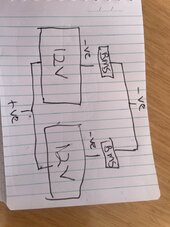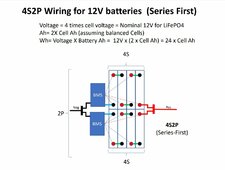Anthony_royalla
New Member
My minimum goal is to deliver sustained 10 amps @240v.
My problem is that the inverter trips out at 5 amps.
My setup is 2 x LiFePO4 batteries (banks of 4 x 304AH cels) in parallel to create one pack. Each “battery” has its own BMS. I have one 4000w inverter. I am using Smart BMS to monitor.
I have inherited this system and am unsure about some settings and aspects of configuration. I originally had a 2000w inverter and replaced that with the 4000w and the fault did not change at all (5 amp trip). My test rig is to run an induction hot plate and increase power setting whilst monitoring the current.
Before getting into the actual problem can someone advise if theoretically this system should be able to deliver the 10 amp load?
My problem is that the inverter trips out at 5 amps.
My setup is 2 x LiFePO4 batteries (banks of 4 x 304AH cels) in parallel to create one pack. Each “battery” has its own BMS. I have one 4000w inverter. I am using Smart BMS to monitor.
I have inherited this system and am unsure about some settings and aspects of configuration. I originally had a 2000w inverter and replaced that with the 4000w and the fault did not change at all (5 amp trip). My test rig is to run an induction hot plate and increase power setting whilst monitoring the current.
Before getting into the actual problem can someone advise if theoretically this system should be able to deliver the 10 amp load?







